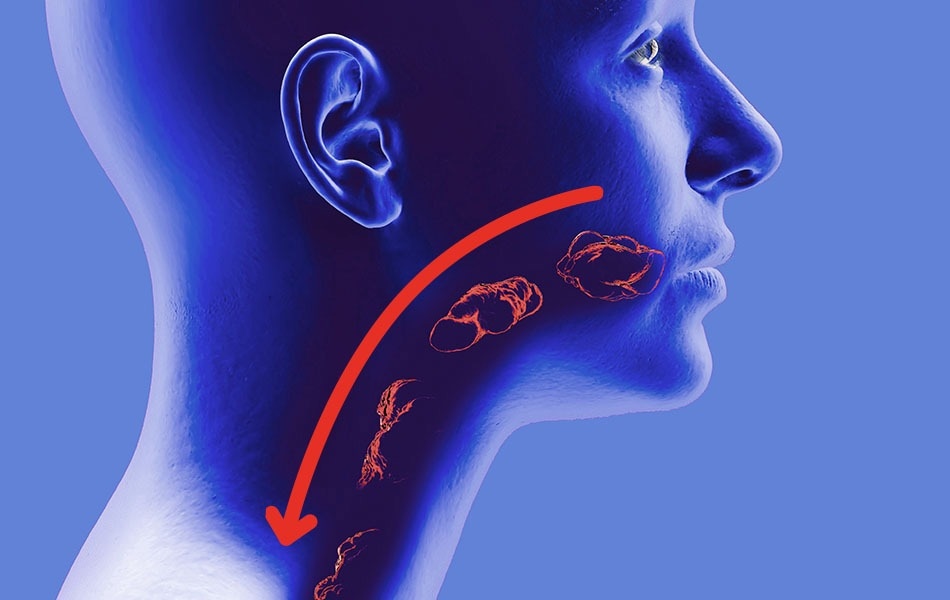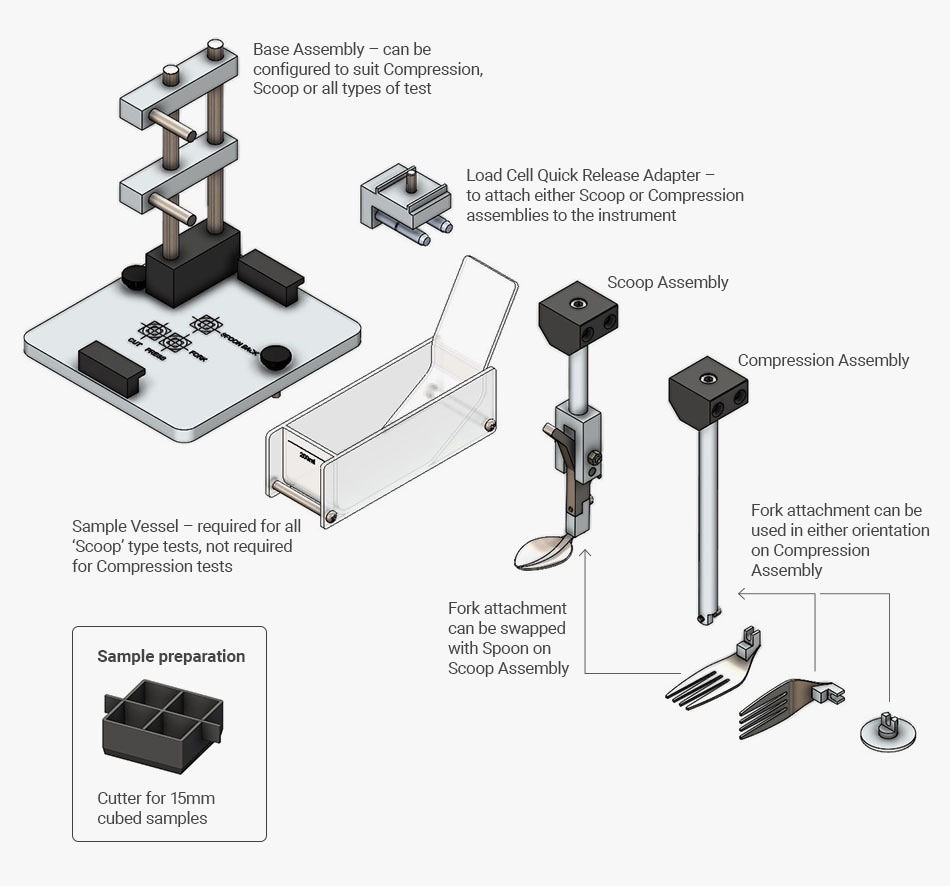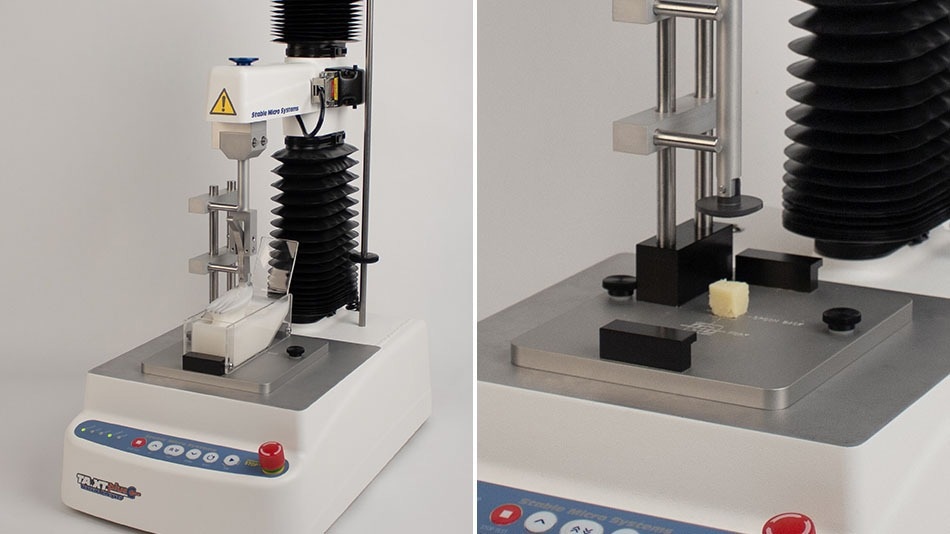The Importance of Developing Foods for Dysphagia
Dysphagia, or difficulty swallowing, is a common condition affecting people of all ages. It can have serious consequences such as malnutrition, dehydration, and aspiration pneumonia. The ability to swallow safely and effectively is essential for maintaining good health and quality of life. Developing foods for people with dysphagia is therefore crucial to ensure that they receive adequate nutrition and hydration while reducing the risk of complications. These foods are designed to be easy to swallow, promote proper oral and pharyngeal function, and prevent aspiration. By addressing the specific needs of individuals with dysphagia, these foods can greatly improve their health outcomes and quality of life.

Image Credit: Stable Micro Systems Ltd
Use of the IDDSI Framework
The International Dysphagia Diet Standardisation Initiative (IDDSI) has played a significant role in the care of dysphagia patients by developing a standardised international terminology and description for texture-modified foods and thickened fluids. This has made it possible to ensure that patients receive the proper consistency of food and drink. While the IDDSI framework provides a standardised texture description (Level 0 to Level 7), the IDDSI texture level testing and assessment are qualitative and subjective. These approaches were designed primarily for use by care workers and are not optimised for use by food manufacturers for product quality control. To address this issue, imitative instrumental methods of IDDSI manual methods have developed by Stable Micro Systems for use on their well-established Texture Analyser range.
Why We Developed Instrumental Methods That Imitate IDDSI Manual Methods?
The major goal of developing this apparatus was to create a set of quantitative instrumental procedures that best matched the IDDSI levels as an objective framework and best imitated the manual IDDSI methods. The TA.XTplusC/TA.HDplusC Texture Analyser is an instrumental device that has been used by globally recognised food manufacturers to test and assess the texture of various food samples. It is a powerful tool for testing a huge range of food texture properties as it can repeatedly perform consistent tests at the same speed, compression distances and scooping depths that are required to imitate the manual methods. The superior sensitivity of the instrument can accurately measure the differences between two similar samples that might otherwise be difficult to assess by hand.
Imitative Instrumental Methods of IDDSI Manual Methods
For each category covered by this equipment (Levels 3–7), IDDSI measuring methodologies were developed to evaluate texture grades of these samples on a Texture Analyser:
- Fork pressure test - involves pressing a fork onto a food sample and measuring the force required to compress it
- Fork drip test - involves tilting the fork with the sample and recording the time taken for it to drip off the fork
- Fork cut test - involves cutting the sample with a fork and measuring the resistance offered
- Spoon pressure test - involves pressing a spoon onto a food sample and measuring the force required to compress it
- Spoon tilt test - involves tilting the spoon with the sample and observing the time taken for it to flow off the spoon
All of these tests can be seen in the following video:
IDDSI imitative testing - testing foods for dysphagia
Video Credit: Stable Micro Systems Ltd
The Advantages of Instrumental vs Manual IDDSI Methods
The use of imitative instrumental methods that imitate IDDSI manual methods provides several advantages over subjective manual testing. Firstly, by using an objective instrumental method, any potential errors caused by subjective manual testing can be removed. This ensures that the test results are consistent and accurate. Secondly, automatic analysis and IDDSI grading can be presented in spreadsheet format, which enables faster sample throughput and removes any requirement to make human judgment. Thirdly, the ability to generate internal frameworks of numbers for each IDDSI funnel category means common methodologies can be shared across sites/labs for comparative testing.
A suite of tools are now available that provide the ability to perform all of these tests using a Texture Analyser by the interchange of the parts to provide the five different imitative methods.

The suite of tools for IDDSI imitative methods. Image Credit: Stable Micro Systems Ltd
Pioneers in the Measurement of Foods for Dysphagia
The use of Texture Analyser has been instrumental in dysphagia research and the development of texture-modified foods. Published work has used Texture Analyser to investigate the effects of texture on swallowing, the relationship between food viscosity and swallowing, and the impact of sensory input on swallowing. Texture Analyser has also been used to develop new texture-modified foods that meet the IDDSI standards. For example, one study used Texture Analyser to develop a new type of food that has a jelly-like consistency and is easy to swallow.
Discover what published work has already used a Texture Analyser for dysphagia research and the development of texture-modified foods.
By using a Texture Analyser, food scientists and developers can test and modify food textures to make them safer and easier to swallow for people with dysphagia. This tool can also help in developing foods that are more appealing and enjoyable to eat, which is important for maintaining adequate nutrition and hydration in individuals with dysphagia. Overall, a Texture Analyser is a powerful tool for ensuring the safety, efficacy, and palatability of foods designed for people with dysphagia and will provide the necessary objective testing to drive the development of foods for this field by food manufacturers.

Image Credit: Stable Micro Systems Ltd
To find out more about how each of these tests work and testing foods for dysphagia, visit our webpage: https://www.stablemicrosystems.com/imitative-IDDSI-methods.html Or Request a brochure

This information has been sourced, reviewed and adapted from materials provided by Stable Micro Systems Ltd.
For more information on this source, please visit Stable Micro Systems Ltd.